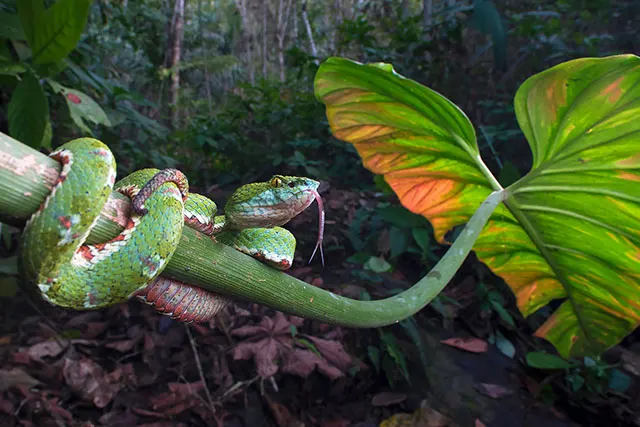Our Mission
Promoting responsible tourism that helps protecting the environment and developing the economy of local communities.

"The good man is the friend of all living things."
-Mahatma Gandhi-
Why Ecuador?
Biodiversity
Ecuador is crossed longitudinally by the Andes Cordillera that separates the Coast; to the west, and the Amazon; to the east, which makes its territory from 0 to 6300 meters above sea level, presenting various ecosystems and natural regions.
The multiple combination of geographic (location), geological, topographic, biological and evolutionary factors makes of Ecuador one of the most biodiverse countries on Earth, hosting +18,000 species of vascular plants, 1,690 of birds, 633 of amphibians, 488 of reptiles and 440 species of mammals.

Natural Regions
ANDES
2 Mountain Ranges.
Hosts the highest amount of endemism in Ecuador.
AMAZON
The most biodiverse place on Earth.
Formed by the Upper Amazon and Amazon Basin.
PACIFIC
Hosts Ecuadorian Choco.
Considered the most threatened bioregion in Ecuador.
INSULAR
Galapagos Archipelago.
Hosts numerous endemic species and some active volcanos.

Why Colombia?
Biodiversity
The beautiful nation of Colombia presents a great variety of natural regions, habitats and ecosystems, due to its privileged geographical, geological and topographic characteristics, among which its location and the presence of the Andes Cordillera, stand out.
With an area almost 5 times bigger than Ecuador, Colombia is also one of the most megadiverse countries on the planet. The diversity of flora and fauna is very high; with 1,954 species of birds, 849 of amphibians, 743 of reptiles, 520 of mammals, and +26,000 plant species recorded to date.

Natural Regions
PACIFIC
Hosts Choco Biogeographic.
Considered an important Biodiversity Hotspot.
AMAZON
40% of Colombia's total territory.
The largest forest area in Colombia.
ORINOQUIA
Intertropical Savannas and Gallery Forests.
Formed by the Orinoco Basin and the Llanos.
CARIBBEAN
Sierra Nevada de Santa Marta.
Hosts high amount of endemism.
INSULAR
78% Colombian coral reefs.
Including the islands in the Caribbean Sea and Pacific Ocean.
ANDES
3 Mountain Ranges.
Hosts 60% of biodiversity recorded in Colombia.





